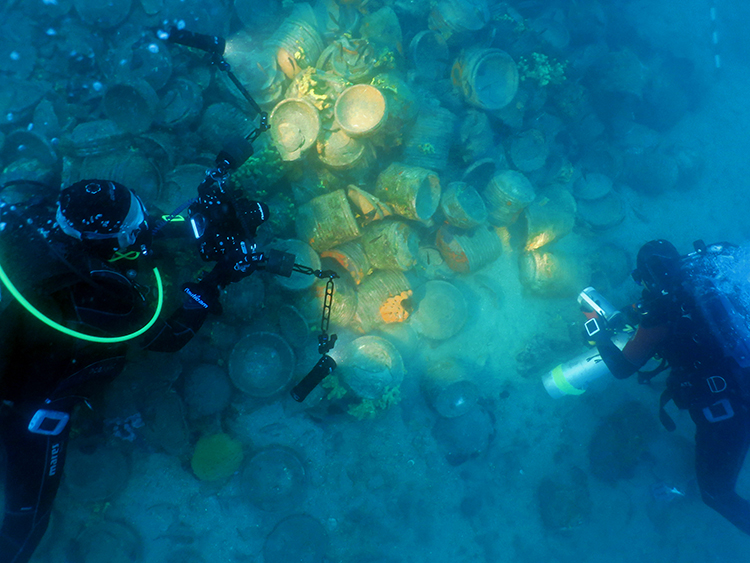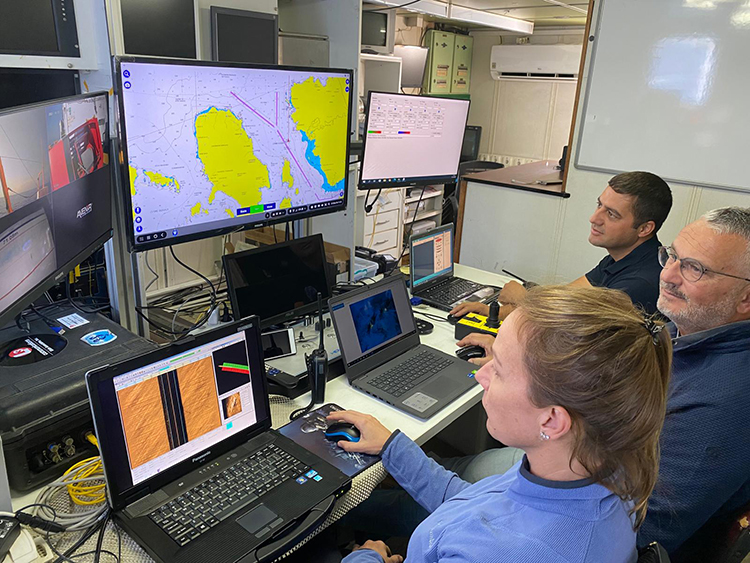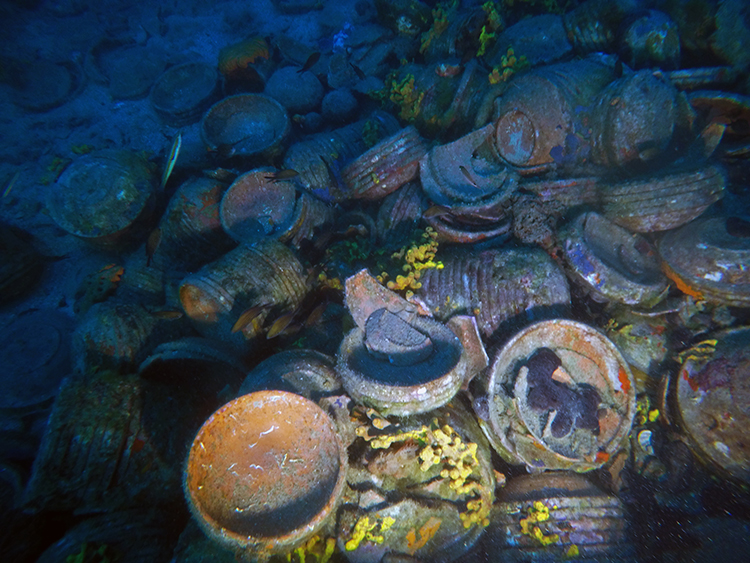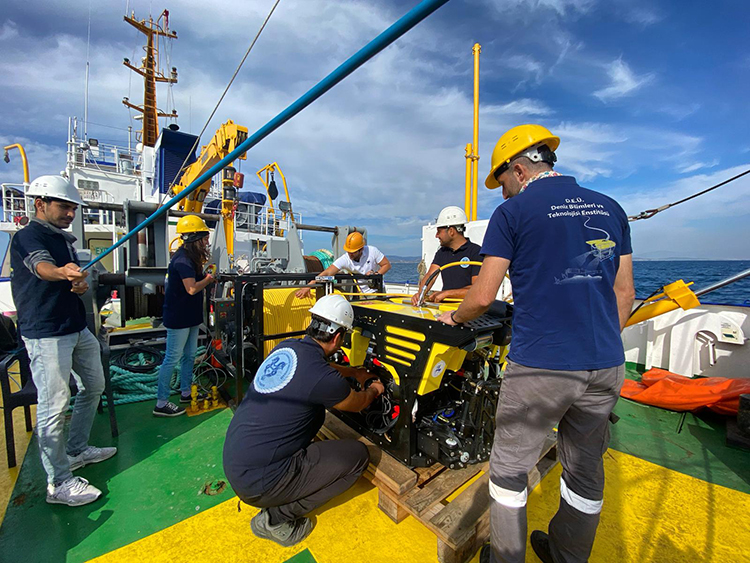
The Turkish Sunken Inventory Project: A 1500-Year-Old Trade Shipwreck Discovered
Under the “Blue Heritage” initiative of the Turkish Sunken Inventory Project, underwater studies conducted along the Aegean Sea coasts have uncovered a 500-year-old trade shipwreck.
In underwater research conducted with robotic underwater vehicles designed by Turkish scientists and produced with local resources, a shipwreck dating back to the end of the 5th century AD was discovered 2.5 miles off the coast of Ayvalık, Balıkesir.
The studies are being carried out by the Underwater Cultural Heritage and Maritime History Application and Research Center (SUDEMER) of Dokuz Eylul University, with the permission of the Ministry of Culture and Tourism.
Assoc. Prof. Dr. Nilhan Kızıldağ stated that the shipwreck, which contains approximately 10,000 ceramic plates, is “the largest plate wreck found in the Aegean and Mediterranean.”

SUDEMER Director Assoc. Prof. Dr. Harun Özdaş explained that they detected some anomalies at a depth of 43 meters, providing the following information:

“We conducted dives on these anomalies with our high-tech devices and located the wreck. This discovery was made possible thanks to our advanced robotic systems, as it is located about 2.5 miles offshore at a depth of 43 meters. We encountered a large pile in an area that is outside the geography typically accessible by standard dives. The unique feature of this pile is that it consists of intertwined plates, approximately 15-20 clusters each, rather than the amphorae we usually identify in our studies. We have found the largest plate wreck known to date in the Aegean and Mediterranean. Preliminary assessments suggest that the ship may have come from North Africa or Cyprus and likely sank after a storm off the coast of Ayvalık.”

The ship is approximately 15 meters long and 9 meters wide. A small quantity of amphorae was also found at the wreck site.
Özdaş noted that it is known that ceramics produced in Cyprus, North Africa, Egypt, and Syria were transported to Anatolia, Greece, or Italy, but there have not been many clear underwater findings related to this trade.
You may also like
- A 1700-year-old statue of Pan unearthed during the excavations at Polyeuktos in İstanbul
- The granary was found in the ancient city of Sebaste, founded by the first Roman emperor Augustus
- Donalar Kale Kapı Rock Tomb or Donalar Rock Tomb
- Theater emerges as works continue in ancient city of Perinthos
- Urartian King Argishti’s bronze shield revealed the name of an unknown country
- The religious center of Lycia, the ancient city of Letoon
- Who were the Luwians?
- A new study brings a fresh perspective on the Anatolian origin of the Indo-European languages
- Perhaps the oldest thermal treatment center in the world, which has been in continuous use for 2000 years -Basilica Therma Roman Bath or King’s Daughter-
- The largest synagogue of the ancient world, located in the ancient city of Sardis, is being restored











Leave a Reply